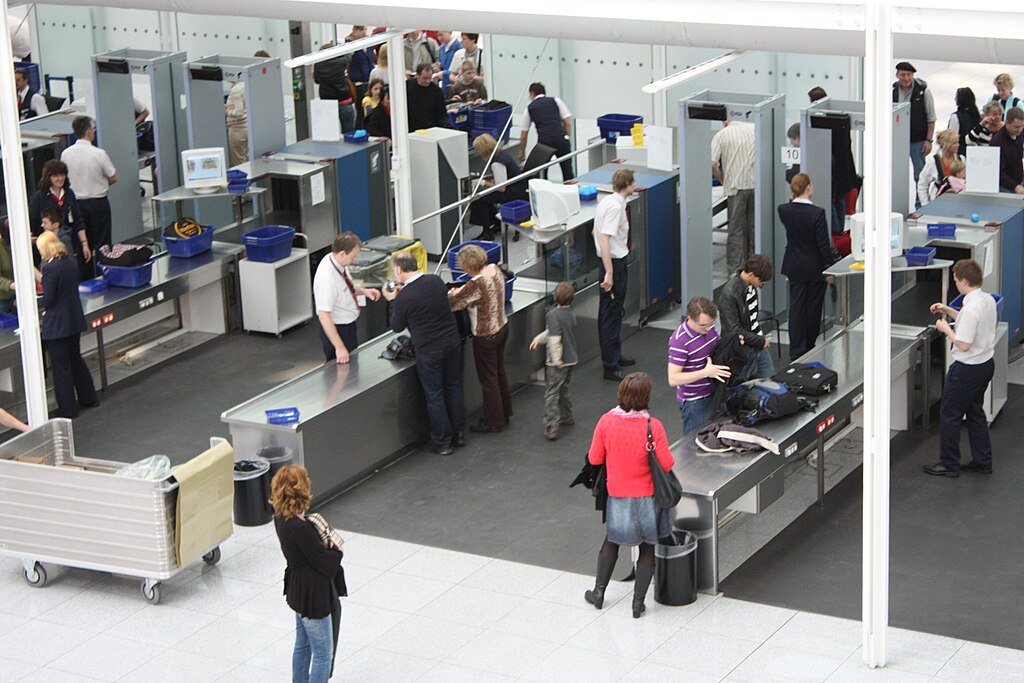How do airport scanners work and what do they really see?
We’ve all been guilty of accidentally leaving the wrong thing in our suitcases when going through airport security. Whether it be water, electronics, or a plastic nerf gun (that one resulted in a long chat with Heathrow’s security officers), they are all detected when luggage passes through airport scanners. But how do these airport scanners work, and what do they really see?
Well, airport scanners are in fact X-ray scanners, employing the same technology as the scanners used for screening in hospitals. X-rays launch from one side of the scanner and are then picked up by a pair of detectors on the other side. As luggage enters through the scanner’s lead-lined curtains, it crosses the path of these X-rays and absorbs a portion of the energy they carry. As such, the X-rays that pass through the luggage have less energy than the rays that went straight past.
The scanner can tell if the luggage has metals, liquids, or even organic materials, which are distinguished by colour on the scanner’s visual display
When the X-rays hit the first detector, their energy and position is recorded. As they continue towards the second detector, a filter blocks out the low-energy X-rays, meaning the second detector only collects high-energy X-rays. By comparing the outputs of the two detectors, the scanner can construct an image showing the position of the objects in the luggage, as well as roughly what they’re made of and their density.
This is because the X-rays pass through different materials at different rates, meaning the scanner can tell if the luggage has metals, liquids, or even organic materials, which are distinguished by colour on the scanner’s visual display. Organic materials such as paper, food, and explosives are orange, blue is used for inorganic materials such as metals and glass, and green is used for mixed substances that contain both organic and inorganic components, such as electronics and batteries. In addition, the denser the material is, the more X-rays it absorbs and the darker it appears on the visual display.
A spokesperson for the US’ Transportation Security Administration (TSA) stated that the images on the visual display “can be rotated 360 degrees on three axes, allowing for more detailed visual analysis by Transportation Security Officers and the detection of a broader range of threats without having to open the bag”. The security officers are able to find anything inside the luggage, even if it is squashed underneath a bundle of clothes.
Stories have been told of weird items found in the UK, including a jar of sweets containing a pair of live goldfish swimming inside, a chainsaw, and a suitcase packed entirely with pork pies
This technology was first envisioned and created by George W Shepherd Jr and Neil Diepeveen in the US in 1970 and has since found itself to be a crucial component in airport and aeroplane security across the entire world. Indeed, according to the Air Transport Action Group (ATAG), 4.4 billion passengers were carried by the world’s airlines in 2023, of which it’s safe to assume quite a lot of them used carry-on luggage. This huge demand is contributing to continued efforts to improve the technology in order to increase efficiency and accuracy. Some newer scanners are reportedly able to detect if liquids contain explosives, generating hope for a future where we can bring full bottles of water onto the plane (however, the possibilities of taking the plastic nerf gun on board might still be a while away).
Of course, despite the airport scanner’s proven effectiveness and its intimidating aura, there are still a huge number of people who try and fail to sneak prohibited items through it. A TSA spokesperson said that “TSA officers encounter everything from fireworks and replica grenades to snakes and literal kitchen sinks”, with the TSA’s YouTube channel highlighting some of their most outlandish finds, including a pistol in a Lego box, an explosive device inside a soda can, and narcotics in hair scrunchies. Similar stories have been told of weird items found in the UK, including a jar of sweets containing a pair of live goldfish swimming inside, a chainsaw, and a suitcase packed entirely with pork pies.
So, the next time you find yourself watching your suitcase get conveyed through the airport scanner’s lead-lined curtains, be comforted by your newly acquired knowledge of the inner workings of the scanner and of its colourful visual display, as well as the knowledge that you did not accidentally pack a weapon of destruction or a little bit too much of your favourite food inside. You’ll then retrieve your suitcase, make your way to your gate, sit down, and have the chance to read more insightful Boar articles. Available online or in print!

Comments